
Many of us have an intense will they/won’t they dichotomy with the word “networking.” Real offline contacts have become increasingly important, while online social networks have become the standard, whether you want to advance your career or make new business connections.
This guide was inspired by the countless rave reviews Eventible has received from B2B marketers at conferences worldwide.
The next time you walk into a room of potential contacts, you’ll feel prepared for in-person networking because the guide will help you handle face-to-face networking situations.
Importance of Networking In-Person
Networking has several advantages in the corporate world, as stated below-
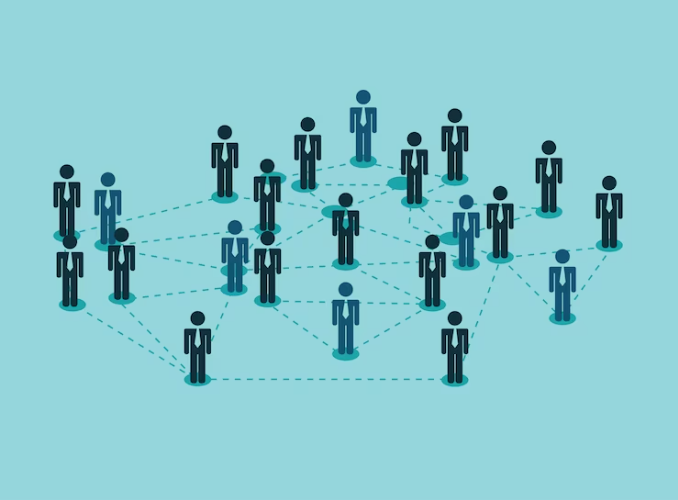
Increase your confidence – Hardly anyone finds starting a conversation with a stranger effortless or natural. You need to discover common ground to connect with. However, the more you engage with strangers, courageous you become.
- Building a support system will ensure you are not left to handle life’s challenges alone.
- It feels incredible to be able to assist others! — Helping others feels great, whether by giving advice, feedback, or working together. Additionally, doing so helps to reinforce the connections you’re forging.
- A fresh viewpoint – If you isolate yourself in a bubble, you’ll never develop as a person. Instead, surround yourself with people from diverse walks of life.
How to network In-Person
In-person networking is instrumental in establishing relationships, expanding one’s network, and advancing one’s career and professional goals. Let’s examine the step-by-step process of in-person networking.
Step 1: Make a striking first impression
i) Understand Your Who and Why
Prepare yourself and have a goal in mind. Before attending an event in the future, think about who you want to meet and why.

Before attending any event, check the guest list on the registration page. You may run into potential clients, mentors, or colleagues you want to get to know.
Set a specific goal. This will make it easier for you to plan well and stay focused at networking events. Your conversations will be more concise and in tune with your connections.
ii) Practice a few words
We don’t want to stumble over our words while meeting new people because we want them to like us. Even the classiest individuals occasionally become agitated. Many worry about beginning discussions, keeping them going, and terminating them when the time comes. If those situations make you want to withdraw, take control by being prepared with reactions.

You may reduce some of the cognitive load placed on your brain in the heat of the moment by rehearsing your replies. By doing so, you can concentrate on the other person rather than trying to figure out what to say next.
iii) Dress for success
Review the event description for information on the dress code. If it isn’t stated, ask experienced attendees or event organizers for recommendations.

- Wear an eye-catching accessory that will spark conversation.
- If you want to stand a lot, invest in comfy shoes for your feet.
- Dress comfortably as well. An uncomfortable shirt is the last thing you want to be thinking about.
If time permits, set out the alternatives the night before to avoid rushing at the last minute. On the event day, wear whatever makes you feel most confident and at ease to make a lasting impression. Read our blog, A Comprehensive Guide On What To Wear To A Conference For Men & Women, to learn more!
Step 2: Focus on gaining knowledge about others
i) Ask open-ended queries
If you only acquire one conversational trick, make it the ability to ask thoughtful, open-ended inquiries. They frequently start with why, how, or what, which calls for responses beyond a primary yes or no response.

Then, to exhibit curiosity and find out more, ask follow-up questions.
You’re not restricted to asking about your profession; you can also ask about their interests and adventures. During in-person networking events, curiosity promotes more fruitful interactions that eventually result in lasting friendships.
ii) Listen more than you speak
Active listening is more crucial than verbal proficiency for networking effectively. Avoiding the impulse to dominate the discussion is simpler when you’re interested in what the other person is saying.

Your short-term memory might be unreliable even if you have mastered active listening. Take notes on your conversations if such is the case. Since you will have the conversation details in front of you afterward, you may provide genuine compliments or follow-up.
Active listening frequently offers opportunities to use your abilities or contacts and assist others in achieving their objectives.
Step 3: Share more of who you are
The best part of networking events is leaving with a meaningful connection that advances our careers or businesses. It could be a job offer, obtaining a customer you’ve been after for months, securing an investor, securing a recommendation letter, etc.
But How do you go about doing this without sounding arrogant?
i) What you desire, ask for it
Your strategy for using networking to acquire what you want is similar to that of most people, but it’s critical to demonstrate your adaptability.

This mix of adaptability and assurance in your ability to complete the task is an excellent approach to constructing your subsequent major request. Be adamant about what you want, but convey it in a way that emphasizes the advantages for your listeners.
ii) Exit a discussion graciously
Knowing when and how to finish a discussion occasionally might be challenging. When you’re prepared to move on but your discussion partner isn’t, consider grinning broadly and saying one of these things:
- I appreciated catching up.
- It was amazing getting to know you.
- Well, I should return to XYZ.

It’s critical to remember that networking differs from speed dating. The main objective is to make valuable, worthwhile relationships.
You should always be courteous while finishing a discussion, even if you’re talking to someone who won’t let you say anything or is spending time complaining about their company. These closing remarks act as cliffhangers, allowing you to continue the discussion when you speak again later.
Step 4: Stay Connected
i) Always follow up
Making contacts in the business world through networking may be beneficial, but it only works if you follow up. After all, trading business cards is just the start of a relationship.
You must take the time to follow up with the individuals you meet if you want to leave a lasting impression.

So, how can you successfully follow up? Before meeting someone, send a tailored email or LinkedIn message. This demonstrates your interest in staying in contact.
Next, invite the person you met for coffee or lunch to foster your relationship. After that, maintaining contact is as simple as sending sporadic emails, connecting on social media, or scheduling a meeting.
ii) Take part in the event community
Maintaining the new connections you gained at the in-person networking event requires continued participation in the event community. Here are several methods for keeping in touch:
- Participate in conversations on the community’s online center.
- Volunteer to help with local event planning.
- Attend upcoming activities in the neighborhood.

A little mingling after an in-person networking event is beneficial for building contacts and expanding your network. As you get more involved in a community, you will build more meaningful connections and feel more at ease attending events in the future, which means networking nightmares will become a thing of the past.
In-Person VS Online Networking
In-Person Networking: Many people missed face-to-face interactions during the pandemic. They preferred having more casual chats while in the same space, looking each other in the eye, shaking hands, and doing so.
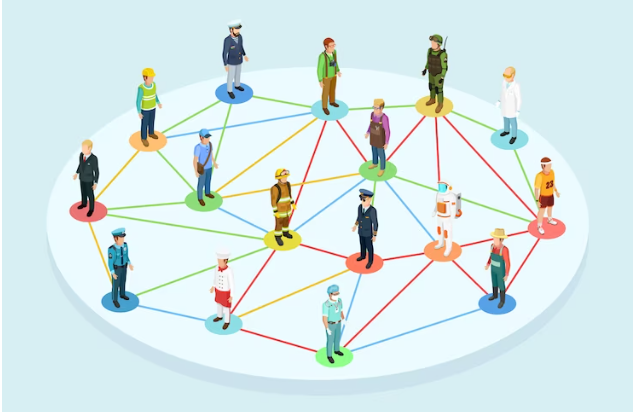
People may find it difficult to network when seated in front of a screen. They frequently discover that using a screen creates a mental barrier that prevents them from connecting intimately with one another. Face-to-face interactions and reactions enable you to express your personality more naturally, which puts others at ease.
Face-to-face interactions also frequently result in more understandable communication. Instead of simply seeing a small face in the corner of your screen, you get to view the entire image, so to speak. Communication requires being able to interpret others’ body language. Meeting in person also eliminates audio latency and cut-outs when numerous people speak, allowing for simpler, more natural conversation.
Online Networking: Networking online is a terrific method for meeting new people without leaving the convenience of your home or workplace. Therefore, virtual networking is considerably more practical if you’re busy. Log in for an hour, then log out and resume your work. There is no waiting in traffic; the connection happens immediately. You could even network while wearing pajamas!
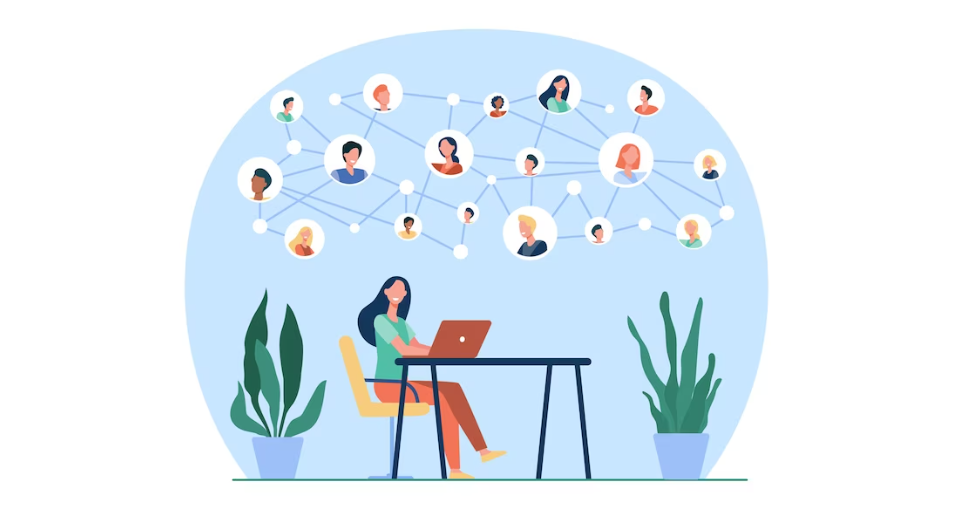
Virtual networking not only saves you time but is also more economical. Attending networking events may incur additional expenses that only become apparent after a year. While using virtual networking, you do not need to pay for things like daycare, transportation, parking, coffee, or breakfast.
In-person gatherings tend to promote companies in a particular geographic region. A virtual organization, however, tends to be more welcoming to members from various regions due to its nature. Therefore, you get to network with individuals around the globe.
Networking During and After a Pandemic
The pandemic has had a significant impact on the way we do events and network in events. Many in-person events were canceled or postponed, and virtual events became the norm. In this section, let’s look at networking in the pre-Covid era vis-a-vis networking in the post-Covid era.
Networking in the Pre-Covid Era
Our business world was straightforward: meet people in person, form relationships, and make lasting connections that may help expand your firm and the businesses of others.
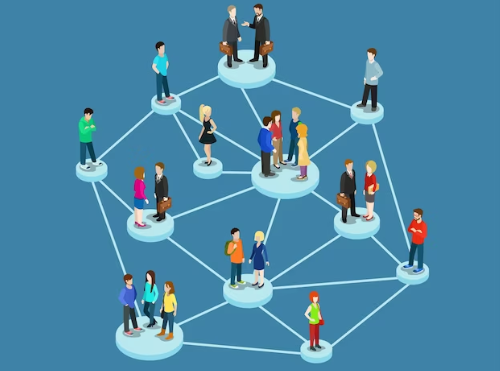
Most known networking included local, regional, state, and national conventions. In addition, there were happy hours, rounds of golf, industry papers, and nominations for each industry’s top executives. All of it was a type of professional networking.
That ended abruptly when the coronavirus epidemic forced everyone to relocate to a simulated online environment.
Networking During and After Covid
While virtual meetings kept us connected for about a year, some creative ways exist for businesses and people to compensate for the absence of in-person networking.

Many businesses started depending significantly on social media sites during the pandemic. Most utilized LinkedIn to publish blogs, business announcements, and updates on products and services. Others stayed in touch with their professional networking networks via Twitter, Facebook, and Instagram. All employees were urged to contribute work-related updates and initiatives that influenced the community.
Still, other firms felt that now was the time to revamp their website and add sections like portfolios, showcase projects, or case studies to emphasize what has happened to customers and other businesses.
The past several months have seen the emergence of a hybrid kind of business networking that continues to rely on online platforms like Zoom while also introducing live conferences. Many companies discover that doing this not only allows them to spend less money on frequent travel but also allows them to network with a more extensive selection of businesses.
Frequently Asked Questions
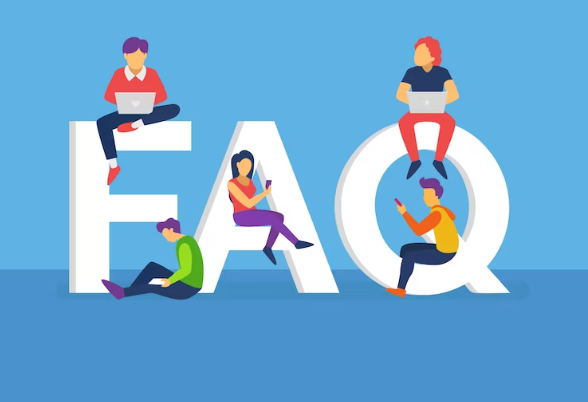
- What are the advantages of in-person networking?
Some of the major advantages of in-person networking are:
i) Meeting In-Person Will Help You Stay Memorable
People frequently multitask and depend on their mobile gadgets all day. Face-to-face interactions encourage us to concentrate and slow down, compared to social media interactions, which are frequently interrupted and rushed.
Meeting someone in person also increases the possibility of sharing personal experiences and identifying shared interests or other factors that make you more memorable.
ii) Personal Relationships Promote Business Conversions
Normally, when speaking to someone, you look them directly in the face and pay attention to their nonverbal cues. It is simpler to establish confidence and reach an agreement when there is eye contact and body language.
A welcoming grin, a confident stance, and a solid handshake can create the slight difference needed to accept an offer.
iii) Communications Done in Person Are More Effective
Connecting with people online is simple, but it’s not ideal for conducting conversations or closing sales.
Getting through someone’s hectic schedule might be challenging, but a face-to-face meeting has made this step possible. An email or online message could receive partial attention, be saved from being read later, or, worse still, be wholly forgotten.
- How do you network better in person?
You must have an action plan that details your goals for networking and your strategy for achieving them. To create your relationship action plan, follow these steps:
- List two things. The first one will be acquaintances with whom you wish to develop closer ties. Examples include friends, coworkers, and exciting individuals you’ve met at gatherings. People you desire to meet will be on the second list. For instance, influential people in your niche, leaders at work, or people from a group you’d like to engage in.
- Make a strategy of action. Decide what steps you will take to meet each person on your list or improve your connection with them.
- Plan the most effective methods to engage with each person as you go along. For instance, concentrate on leaving a solid first impression if it’s your first meeting. Or, if you already know the individual, try to find methods to communicate with them more frequently, like scheduling regular coffee sessions.
As you build relationships and establish new objectives, frequently update your relationship action plan. If you are more methodical in your networking activities, you will establish contacts more quickly.
- Is networking better in-person or online?
It’s ideal for striking a balance between the two so that your perspective is expanded. Either way, you may grow your business, interact with other entrepreneurs, and receive encouragement. In-person networking is more natural, yet virtual networking is frequently more practical.
Networking is crucial for growing your career regardless of the benefits and drawbacks. The most crucial step is to begin so that you can determine what works best for you and your brand.
- How do you approach someone at a networking event?
Here are some of the ways to approach someone at a networking event:
i) Introduce Yourself
85% of professionals claim that meeting someone in person helps them form more meaningful relationships. Approach other experts and introduce yourself. The easiest method to strike up a discussion is with something that appears straightforward. Give a firm handshake and flash a happy grin. Spend some time crafting a succinct 30-second summary of your brand, company, and objective.
Some business people prefer to exchange cards immediately, while others wait until after a fruitful conversation. Consider introducing your firm or profession on your business card.
At this point, you’ve already established a personal connection, and your partner may glance at the business card as you describe your organization’s mission and services.
ii) Bring a companion along while you walk
Talking while moving may quickly establish a bond. Invite a brand-new buddy on your walk to the subsequent panel or the snack table. This may be a terrific method to continue a conversation already in progress without missing the conference’s next phase.
This strategy can also be used to engage a wallflower in the event. Some businesspeople struggle with what to say when networking; if you see someone attempting and failing to initiate a conversation, offer to let them join you for a little while. After you arrive at your location, their increased self-assurance will make it easier for them to socialize.
iii) Consider Reconnecting
As you close the conversation, suggest continuing it later. You could be considering purchasing their services, seeking guidance on landing a position there in the future, or believing their current project would greatly benefit from your expertise. Don’t forget to give the other person a reason to remember you.
- How do you network at an event?
Here are some of the best ways to network at an event:
i) Begin with those you are familiar with
You should start by contacting people you already know since it is good practice, and you never know where your present relationships may take you. Find out whether someone you know works for an employer you’d want to learn more about or is in a job sector that interests you by asking others around you.
ii) Be willing to interact with others
Make an effort to network at all stages of your profession, particularly when starting. If someone is unfamiliar to you but has a link to a company or job you seek, don’t write them off. The more individuals you get to know and talk to about your professional objectives, the better.
iii) Find opportunities
There are probably professional groups that you may join based on the sector or occupations that interest you. Look for networking events or professional associations catering to underrepresented groups.
If you’re new to networking events, see if a friend who shares your professional interests would join you. Your anxiety may be reduced, and your self-confidence may increase if a friend accompanies you. You could be pleasantly surprised if you approach the situation with optimism and a grin.
iv) Be inquisitive and ask inquiries
One aspect of networking is meeting people who can assist you. The strongest professional bonds are formed when two people are interested in getting to know and supporting one another.
Ask insightful inquiries to learn more about the person you’re speaking to rather than just concentrating on yourself and your wants.
v) What to talk about at a networking event?
Step into the event prepared with a few conversation starters in search of the opportunity to meet some new people.
vi) Make the Right Queries
Asking a question that invites a response is an excellent way to start a discussion. Simple inquiries like “Are you enjoying yourself?” help to break the ice but do not promote further conversation.
Encourage them to talk openly about their occupation and the events they are attending. Inquire further about the topics they appear enthusiastic about.
Acknowledge your lack of experience and let the other person fill you in on their networking strategy.
During conferences, there are several panels, exhibits, and speeches, all of which provide exciting discussion topics. An excellent place to start is by asking them about food. You can get people to open up quickly this way, and you could even learn about a fantastic new eatery.
vii) Look for shared interests
A networking event aims to establish business relationships amongst strangers. You might be shocked by how much in common you share with the other businesspeople in the room.
Discuss the presenter, the event’s goal, or your common industry. Build the conversation around issues the other person is interested in; if they look bored by the presentation but excited to discuss the neighborhood market, seize the opportunity.
Do not allow a discussion to get stale because you feel constrained by a script.
You could converse with prospective customers at a multi-industry gathering. Expand your network and interact with other professionals in your field. You could come across employment possibilities or possible business partners.
Use your similarities to highlight the other person’s distinctive or intriguing characteristics. Engage with the objectives and successes they feel like discussing.
viii) Keep in touch with them
Any networking event requires one crucial but sometimes overlooked step: follow-up. Send emails to everyone you have contact with. To help people remember you, mention a few things. Finish by extending an invitation to meet for lunch or future collaboration.
Networking events are the beginning of a more extended conversation and professional connection. If you have confidence in your personality and the services you provide, you’ll soon locate other professionals with whom you click.
Key Takeaway
Knowing the right people is crucial if you want to advance in the corporate world. Successful businesspeople prioritize attending offline and online networking events since each has advantages.
Scroll through the screenshots below, which were gathered from the Eventible database and feature attendees from around the world discussing the significance and merits of networking.
It’s essential to gradually expand your network of contacts. Do not only ask for help when you are in need. If it has been a while since you last spoke, your contact may not remember you, or they may see right through it. Look for opportunities to connect with your network frequently. Send a congratulations message to someone who has received a promotion or a new position. Share any content you come across that you believe they will enjoy.
One of the finest strategies for advancing your career is to have a robust professional network. You could be shocked by where it takes you if you start honing your networking abilities!

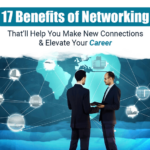


Comments are closed.